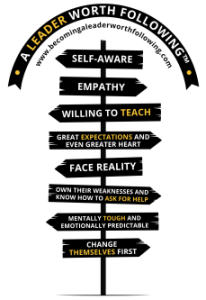Leadership Blind Spots: What Even the Most Experienced Leaders Often Miss
No matter how seasoned or skilled a leader may be, blind spots are an unavoidable part of leadership. These are the areas where we simply don’t know what we don’t know. Left unchecked, blind spots can limit growth, weaken decision-making, and create barriers between leaders and their teams. But when leaders recognize, accept, and actively work to uncover their blind spots, they build stronger organizations and become leaders worth following.
What Are Leadership Blind Spots?
A leadership blind spot is a gap in self-awareness, something a leader fails to recognize about themselves, their team, or a situation. Unlike weaknesses, which are usually known and acknowledged, blind spots are hidden. They can range from overconfidence in decision-making to ignoring the perspectives of others.
As one expert put it:
“Where we get into trouble is when we are in a situation that we don’t know what we don’t know. And we would call those blind spots.”
Every leader has them. The key is developing the courage to ask: What am I not seeing? What don’t I know?
Why Blind Spots Are Dangerous for Leaders
Blind spots become problematic when leaders assume they see the full picture. This mindset can lead to:
- Missed opportunities – failing to recognize better strategies or ideas.
- Team disengagement – overlooking the input and concerns of employees.
- Poor decision-making – acting on incomplete or biased information.
- Erosion of trust – appearing closed off, arrogant, or unwilling to grow.
Overcoming Leadership Blind Spots
The first step is humility: acknowledging that blind spots exist. The second is action: seeking out feedback and perspectives that reveal them.
Here are proven ways leaders can address blind spots:
- Ask Questions Relentlessly
Leaders should continually ask themselves: What am I missing? What don’t I know about this situation? Where could I be wrong? - Rely on Trusted Advisors
Friends, mentors, peers, and even outsiders can offer valuable perspectives leaders may not have themselves. - Listen to Employees
Often, those closest to the work see risks and opportunities leadership overlooks. Creating a culture where employees feel safe sharing those insights is essential. - Be Aware of the “No-Go Zones”
In Becoming a Leader Worth Following, leadership blind spots are often tied to three key areas: ego, libido, and dinero (money). Each of these can cloud judgment and lead to poor decisions if left unchecked. - Embrace Uncertainty
Leaders don’t need to have all the answers. Courage comes from admitting uncertainty and leveraging the perspectives of others to make better, informed choices.
The Bottom Line
Blind spots are part of leadership, but they don’t have to hold leaders back. By embracing self-reflection, seeking feedback, and being open to new perspectives, leaders can uncover what they don’t see and transform blind spots into growth opportunities. The strongest leaders aren’t the ones who know everything; they’re the ones willing to admit they don’t.



